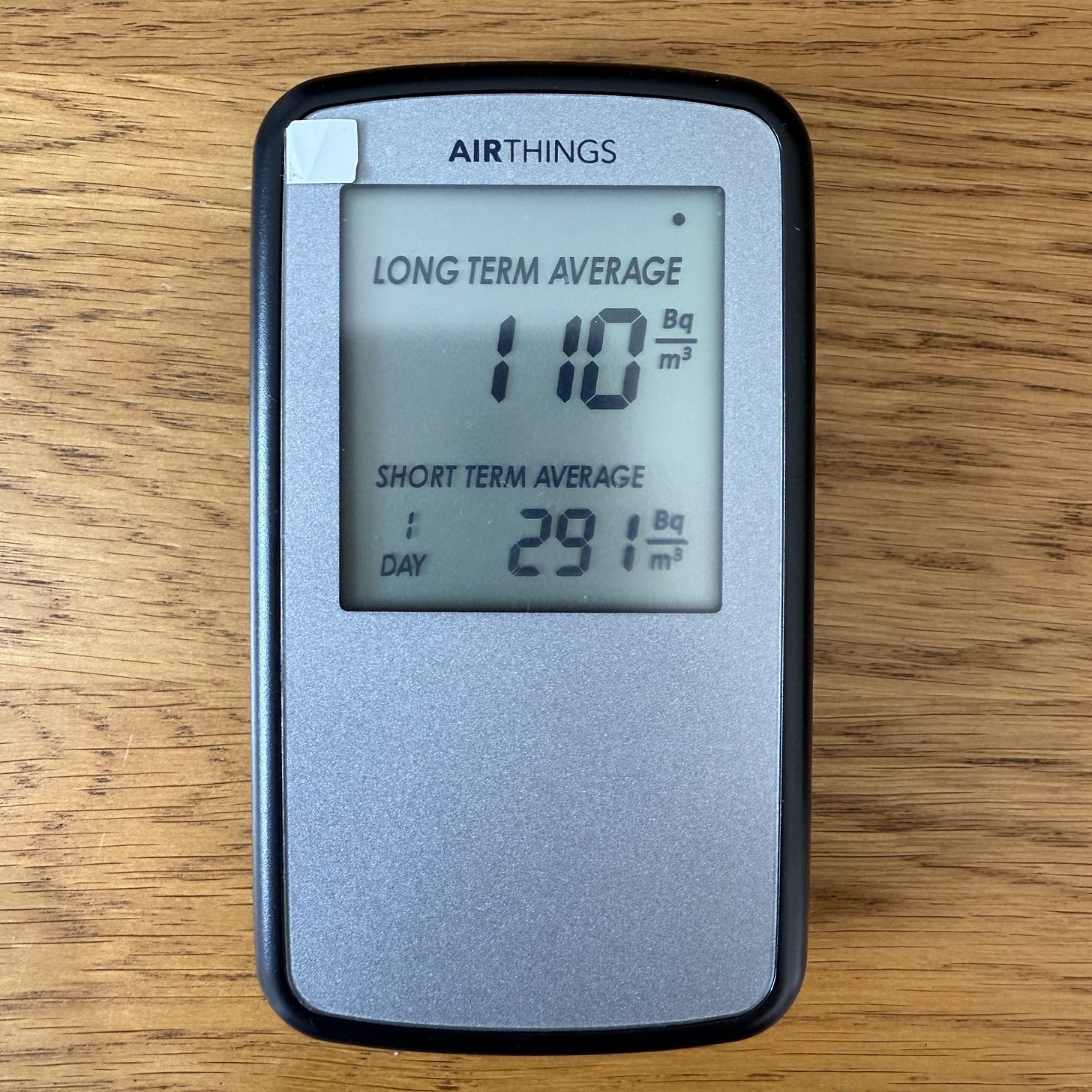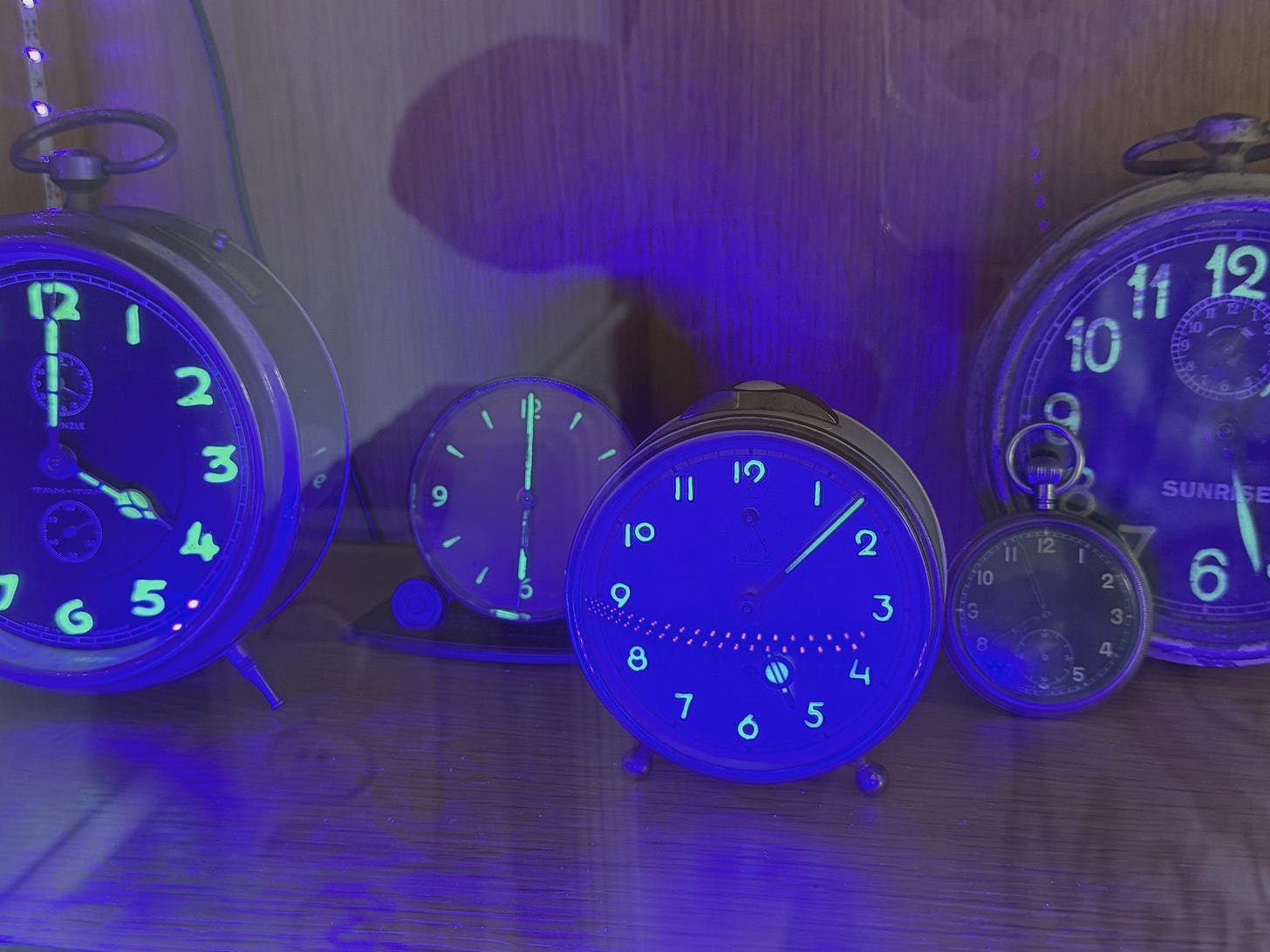I accidentally built a radioactive gas chamber
The hidden danger of radon gas and how to manage it
It’s my firm belief that radioactivity shouldn’t be feared but understood. Nuclear disasters and Hollywood films have linked the tick of a Geiger counter to mean certain death. In reality, this is far from true. Despite this, since launching this Substack, genuine reader concerns have covered…
Aren’t you afraid of radiation sickness? No, not possible from these items.
Won’t you get cancer? I have the same chance as everyone else.
Will you get uranium poisoning? No, I’m not eating my antiques.
The only question that gives me real pause for concern hasn’t been asked. That is ‘Aren’t you concerned about radon gas?’. Yes, especially since I accidentally built a radioactive gas chamber at home… but I’ll come onto this story shortly.
Let’s talk about radon gas.
What is radon gas?
Radon gas is found everywhere on Earth, formed from the natural decay of uranium and radium found in nearly all rocks and soils. When it exists outside, it typically has a low diluted level. As some parts of the world have higher amounts of radioactive materials in the ground, it means radon levels differ.
For example, if you’re based in the UK, the West side of the country has higher radon levels. It’s no coincidence that Cornwall has the only - now abandoned - uranium mine in the UK, often called the most radioactive place in the UK.
The challenge with Radon is that it is colorless, odorless, and tasteless. The gas itself is chemically inert and largely harmless, but due to its short half-life of 3.8 days, it decays into a series of radioactive products that release alpha radiation. When this type of radiation is outside of the body, it’s easily blocked by skin, but inside the body these radioactive isotopes interact with internal tissue, causing damage, and can lead to the development of lung cancer.
Radium-containing antiques emit radon gas
Radium decays into radon, so this gas will leak out of old antiques. In my collection, I have old aircraft gauges, clocks, watches, compasses, etc, all of which will be emitting radon. The immediate danger isn’t the fact they’re radioactive, as I don’t have them in proximity long-term, but that radon will build up in the room they’re stored in unless well-ventilated.
So if you’re interested in collecting radium-containing antiques, it’s crucial to understand radon to stay safe.
How to measure it?
Radon is measured in becquerels (Bq) per cubic metre of air. One becquerel (Bq) is equal to one radioactive decay per second. When using an electronic reader, you will receive short-term readings that measure amounts within a week, and a longer reading that is a month or more. Radon fluctuates, hence the different readings.
If you’re in the UK, the Government recommends radon levels be reduced in homes where the annual average concentration is at or above 200 Bq/m³. Additionally, a "Target Level" of 100 Bq/m³ has been established as the ideal outcome for efforts to lower radon at home.
I built a gas chamber
That radioactive gas chamber I mentioned at the start? Well, that’s my office. My short-term average radon levels were 291 Bq/m³ - nearly three times the recommended target level - after moving my monitor to my office for 48 hours. I deliberately wasn’t in the office over this period and ventilated it afterwards.
These high readings were produced by just four antique desk clocks and a pocket watch. The room itself isn’t ventilated when shut, so this became a - safe - at home experiment for radon measurement. After 48 hours of returning to my home office, I was surprised by the high readings.
I’ve corrected the issue by sealing these antiques in airtight plastic bags, stopping the radon from accumulating in the room, whilst also being able to enjoy having the clocks on display.
It’s also possible to keep radium-containing antiques unsealed, but in well-ventilated places. Some of the serious radium collectors have purpose-built ventilation systems.
Whether you’re a collector, interested in collecting items, or think you may have radium-containing antiques at home, stay safe and think radon.





